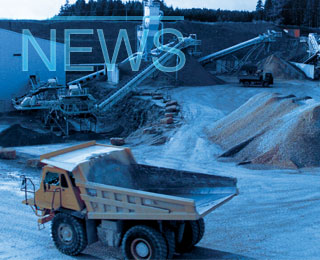This week, Fives FCB reported the commissioning of two new cement grinding mills at Qatar National Cement Company’s (QNCC) Umm Bab plant in Qatar, as the country ramps up its cement capacity for the large infrastructure projects that are currently being established.
QNCC has been modifying its Umm Bab plant by adding the 5000tpd Plant 5. When the upgrade is complete in 1Q17, the plant will have a total clinker capacity of 17,000tpd (5.6Mta) and a cement production capacity of 20,000tpd (6.6Mta). QNCC already supplies the domestic market with 70 per cent of its cement.
The 4Q16 saw favourable returns for Qatari cement producers. QNCC announced a profit rise of 14 per cent YoY to QAR119.62m (US$32.8m) and its full-year 2016 profits increased 2.5 per cent YoY to QAR475.1m with cement sales of QAR1144.6m. The company also released a tender in January 2017 for the replacement of raw mill No 3 and a limestone silo at the Umm Bab plant.
Earlier in 1Q17 import company, Qatar Primary Materials company had announced that it would soon be inaugurating its 12-silo complex at the Port of Mesaieed, which has a storage capacity of 5000t for each silo (60,000t in total).
Meanwhile, Al Khalij Cement (Qatari Investors Group) commissioned its second line at the end of 2015, which added a further 6000tpd of clinker production to the national capacity and raised cement capacity at the plant from 9500tpd to 15,500tpd. Al Khalij Cement (formerly known as Gulf Cement) is working towards scaling up operational performance to produce 4.5Mta of cement at its Umm Bab plant.
Other major producers in Qatar include LafargeHolcim’s subsidiary, Al Jabor Cement Industries, which operates a 0.9Mta grinding station, just south of Doha.
Meanwhile, United Gulf Cement operates a 0.17Mta white and grey cement grinding unit in the Mesaieed Industrial City and is currently building a terminal at Port Masaieed for grey cement with storage capacity of 60,000t.
Imports
Qatar is also seen as a high-value market for importers and while the UAE has reduced its influence in Qatar's market of late, it is apparent that Iranian companies still supply clinker. Meanwhile Saudi Arabian cement producers had their export ban lifted in July 2016 and are now in a position to compete for cement sales in Qatar's construction sector.
Outlook slowing
While Qatar is set on a course to ensure the completion and implementation of major projects in key sectors related to the FIFA World Cup of 2022, the 2016 state budget saw a deficit for the first time in 15 years. The 2016 capital spending budget expenditures totalled QAR202.5bn, a 7.3 per cent cut on the 2015 budget, according to Samba Financial Group.
Qatar's revenues have been affected by the global reduction in oil prices, foreign inflatory pressures, as well as a slowing of foreign currency deposits. While there are adequate reserves, much of the deficit going forward is expected to be funded by increased credit until the fiscal balance is improved with the return of stronger hydrocarbon prices.
The government is forecasting GDP growth to average 3.6 per cent over 2016-18, on the back of a continued expansion of the non-hydrocarbon sector. The pace of construction is expected to ebb in this period, say ministers. However, the construction sector will make up a significant share of the growth even if services are the second-largest contributor to government revenues after hydrocarbons.

Sign up for our Daily News Service
Our editors' pick the top news delivered to your inbox each day.
Sign up for the daily email
